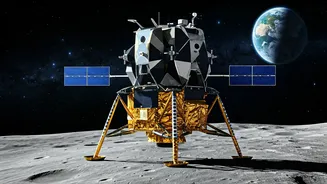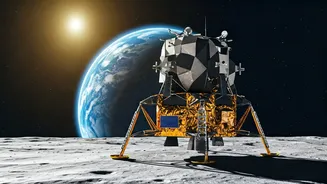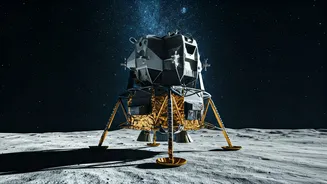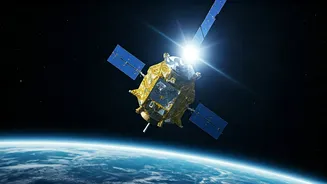Chandrayaan-4's Genesis
The green light has been given to Chandrayaan-4, setting the stage for India's 2028 lunar mission. The primary objective of this mission is the retrieval
of lunar samples, a feat that would solidify India's standing in space exploration. This mission is designed to go further than previous Chandrayaan missions. The selection of lunar samples is a vital part of scientific investigation, giving researchers the opportunity to study the Moon's composition, history, and possible resources. This mission is going to be a direct challenge to the space ambitions of the United States and China, raising the stakes in global space endeavors. The Chandrayaan-4 mission represents a bold move to advance space exploration, showing India's commitment to cutting-edge science and technology.
Mission's Key Objectives
Chandrayaan-4's central goal is to bring back samples from the lunar surface. The collection of these lunar samples will provide invaluable data, contributing to our understanding of the Moon's formation, composition, and evolution. Scientists will be able to analyze these samples, searching for evidence of water ice, minerals, and other elements, offering insights into the possibilities of future lunar bases and resource exploitation. The mission will likely involve landing on the Moon, collecting samples, and launching them back to Earth. This is a complex undertaking, requiring advanced technology and precise execution. Success for this mission will place India at the forefront of space exploration, strengthening its position amongst global powers in the domain of space research and development.
Impact on Global Stage
The Chandrayaan-4 mission is set to make a significant impact on the international space landscape, acting as a direct challenge to established space powers like the United States and China. Retrieving lunar samples would signal India's scientific prowess. The success of Chandrayaan-4 could inspire other countries to increase their involvement in space research, encouraging more collaborative and competitive initiatives. Such ventures contribute to the advancement of space exploration technology. India's commitment to space missions underscores its dedication to innovation and scientific advancement, potentially altering the direction of global space exploration and bringing in new partnerships and possibilities in the coming years.
Technological Advancements
To bring the Chandrayaan-4 mission to fruition, India will need to rely on significant technological improvements. This includes advancements in rocket propulsion systems, precise landing technologies, and the creation of advanced sample collection tools. The mission's success relies on complex orbital maneuvers and secure return systems to transport lunar materials back to Earth safely. The development of reusable launch systems and the use of cutting-edge materials could improve mission efficiency and cut costs. Such technological advancements will improve India's overall capabilities in space exploration, opening up new paths for future missions and projects, and pushing the boundaries of what's possible in space research.
Future Space Exploration
The Chandrayaan-4 mission represents more than just a single scientific undertaking; it represents a key step for future space exploration goals. The knowledge gained from this mission will be vital for future lunar missions, the establishment of lunar bases, and the possible exploration of other planets. The ability to collect and analyze lunar samples is crucial for identifying resources that can support long-term space colonization. India's dedication to the Chandrayaan-4 mission shows its interest in both exploring space and furthering the boundaries of scientific knowledge and human exploration. This mission is setting the stage for even more ambitious and groundbreaking projects in the future, improving the scope and possibilities of space exploration.














